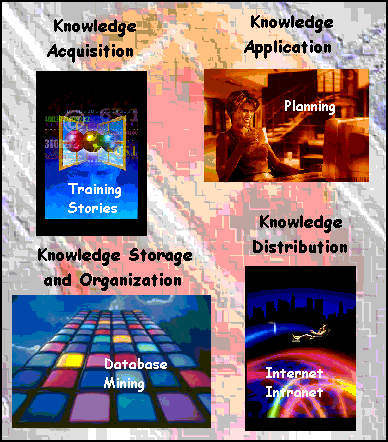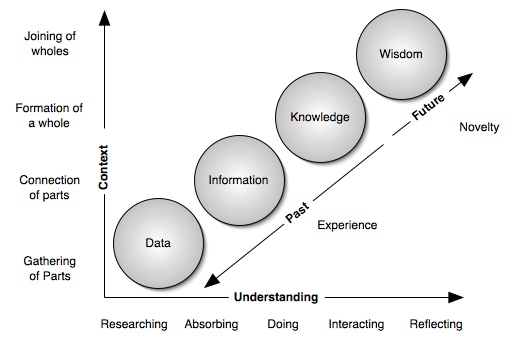Copyright Law and Fair Use
What Is Copyright?
Simply put, "copyright is a legal device that provides the creator of a work of art or literature, or a work that conveys information or ideas, the right to control how the work is used" (Fishman, 2008, p. 6).The intent of copyright is to advance the progress of knowledge by giving an author of a work an economic incentive to create new works (Loren, 2000, para. 12).
What Can be Copyrighted?
Tangible, original expressions can be copyrighted. This means, for example, that a verbal presentation that is not recorded or written down cannot be copyrighted. However, anything that is tangible can be copyrighted. There are three fundamental requirements for something to be copyrighted, according to the United States Copyright Office (2008, p. 3):
- Fixation:
- The item must be fixed in some way. The manner of fixation may be just about anything. For example, fixation occurs if something is written on a piece of paper, posted online, or stored on a computer or phone, or on an audio or video device.
- Originality:
- The work must be original. Originality includes a novel or a student's e-mail message to a professor. Both are considered examples of original expression.
- It is not necessary for the work to be completely original. Works may be combined, adapted, or transformed in new ways that would make them eligible for copyright protection.
- Minimal Creativity:
- The work must include something that is above and beyond the original. Verbatim use is not considered original. Reference to the original work that is used to discuss a new concept would be considered original, however.
- Creativity need only be extremely slight for the work to be eligible for protection. The law merely states this is "original works of authorship" (United States Copyright Office, 2008, p. 3).
What Cannot be Copyrighted?
- Works in the public domain:
- Ideas are in the public domain.
- Facts are in the public domain.
- Words, names, slogans, or other short phrases also cannot be copyrighted. However, slogans, for example, can be protected by trademark law.
- Blank forms.
- Government works, which include:
- Judicial opinions.
- Public ordinances.
- Administrative rulings.
What Does Copyright Protect?
Copyright provides authors fairly substantial control over their work. The four basic protections are:- The right to make copies of the work.
- The right to sell or otherwise distribute copies of the work.
- The right to prepare new works based on the protected work.
- The right to perform the protected work (such as a stage play or painting) in public (U.S. Copyright Office, 2008, p. 1).
What is Fair Use?
Fair use is the most significant limitation on the copyright holder's exclusive rights (United States Copyright Office, 2010, para. 1). Deciding whether the use of a work is fair IS NOT a science. There are no set guidelines that are universally accepted. Instead, the individual who wants to use a copyrighted work must weigh four factors:The purpose and character of the use:- Is the new work merely a copy of the original? If it is simply a copy, it is not as likely to be considered fair use.
- Does the new work offer something above and beyond the original? Does it transform the original work in some way? If the work is altered significantly, used for another purpose, appeals to a different audience, it more likely to be considered fair use (NOLO, 2010, para. 6). Recent case law has increasingly focused on transformative use to make fair use determinations – for a discussion of this topic see Lultschik, 2010.
- Is the use of the copyrighted work for nonprofit or educational purposes? The use of copyrighted works for nonprofit or educational purposes is more likely to be considered fair use (NOLO, 2010, para. 6).
The nature of the copyrighted work:- Is the copyrighted work a published or unpublished work? Unpublished works are less likely to be considered fair use.
- Is the copyrighted work out of print? If it is, it is more likely to be considered fair use.
- Is the work factual or artistic? The more a work tends toward artistic expression, the less likely it will be considered fair use (NOLO, 2010, para. 9).
The amount and substantiality of the portion used:- The more you use, the less likely it will be considered fair use.
- Does the amount you use exceed a reasonable expectation? If it approaches 50 percent of the entire work, it is not likely to be considered a fair use of the copyrighted work.
- Is the particular portion used likely to adversely affect the author's economic gain? If you use the "heart" or "essence" of a work, it is less likely your use will be considered fair (NOLO, 2010, para. 13).
The effect of use on the potential market for the copyrighted work:- The more the new work differs from the original, the less likely it will be considered an infringement.
- Does the work appeal to the same audience as the original? If the answer is yes, it will likely be considered an infringement.
- Does the new work contain anything original? If it does, it is more likely the use of the copyrighted material will be seen as fair use (NOLO, 2010, para. 11).
What are the Rules for Fair Use for Instructors?
Copying by instructors must meet tests for brevity and spontaneity:- Brevity refers to how much of the work you can copy.
- Spontaneity refers to how many times you can copy and how much planning it would take to otherwise seek and obtain permission from a copyright holder (U.S. Copyright Office, 2009, p. 6).
According to the rule, the need to copy should occur closely in time to the need to use the copies. If you use something repeatedly, it is less likely to be considered fair use. The expectation is that you will obtain permission from the copyright holder as soon as it is feasible. Using something over a period of multiple semesters or years is not within the spirit of the fair use exception.
In addition, there are recommendations for what the U.S. Copyright Office calls "special" works.- "Certain works in poetry, prose, or in ‘poetic prose’ which often combine language with illustrations and which are intended sometimes for children and at other times for a more general audience fall short of 2,500 words in their entirety" (U.S. Copyright Office, 2009, p. 6).
- Special works should never be copied in their entirety.
- An excerpt of no more than two pages or 10 percent, whichever is less, is the rule for special works (U.S. Copyright Office, 2009, p. 6).
The use of the copies should be for one course at one school. The copies should include a notice of copyright acknowledging the author of the work (U.S. Copyright Office, 2009, p. 7).
UMUC recommends that its faculty and instructors consider both the special guidelines for instructors and take into account the four factors that are used to evaluate fair use when they are deciding what and how much of a copyrighted work to use.


